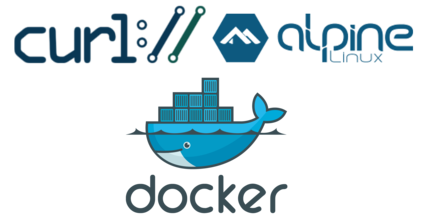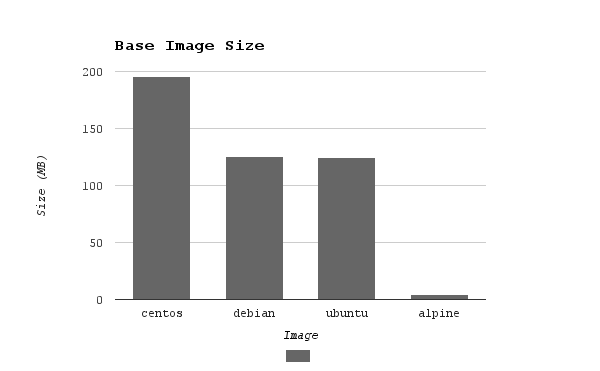cURL with HTTP2 Support - A Minimal Alpine-based Docker Image
cURL the Night Away

One of my favorite open source projects is cURL.
Though frequently taken for granted I really feel that it deserves a lot of
appreciation and respect. Without curl available in our toolbelt those of
use who do heavy interaction with the network (quite a few of us) would really
be in a pickle. curl is fast, minimal, and like most good tools, tends to
stay out of your way and “just work”.
Due to its wide-ranging “Swiss army knife for data transfer” scope it is not
entirely unheard of to want a feature of curl (such as UNIX socket
support)
that your system’s provided packages either have not been configured to support
or are too old to include. Consequently you might find yourself wanting to
compile a version of curl for yourself which includes these features. In
spite of the fact that compiling your own dependencies can be scary, especially
if you’re not the type to pop open the proverbial hood and poke around, it is
an incredibly liberating experience to customize the software you are using
exactly to your own specifications.
It is also empowering to know that if needed you can compile your own software and aren’t limited to the packages that others hand to you. Suddenly, you may become filled with a giddy feeling that you can install and configure any software under the sun, exactly how you like it, without needing to accept the limitations or differences in preference where others left off. Since humans frequently like nothing more than to feel that they have made their own mark on a thing, this is one of the most addicting rushes of working with open source software.
Docker, with its filesystem isolation properties, is a
perfect fit for this sort of tinkering. You don’t need to worry about messing
up your own local system with installing dependency libraries or a botched
make install-type command. It frees you to take the training wheels off a bit
and be willing to make mistakes. This is a great thing since the only way to
learn is to sometimes botch things completely and botching them inside of a
container that you can simply throw away is much safer than messing with your
local system until you get it into some bespoke state. Additionally, if you
script the steps with a Dockerfile there will be no messy attempts at
recalling the build later on – it will all be documented and automatable via
Dockerfile. Though it does not 100% guarantee build
reproducibility,
it is a dramatic improvement over a hastily scrawled README.
Let’s build a Dockerfile to create a minimal, Alpine
Linux-based image with support for HTTP2. An
emphasis will be made on keeping the generated image small and on customizing
curl 100% how we like it.
Approach
We will:
- Discuss “Why do we care about HTTP2”?
- Present the
Dockerfilein full to get a feel for the build - Discuss the choice of Alpine as a base image
- Go over the
Dockerfilestep-by-step - Build and run the image
Why HTTP2?
From https://http2.github.io/:
HTTP/2 is a replacement for how HTTP is expressed “on the wire.” It is not a ground-up rewrite of the protocol; HTTP methods, status codes and semantics are the same, and it should be possible to use the same APIs as HTTP/1.x (possibly with some small additions) to represent the protocol.
The focus of the protocol is on performance; specifically, end-user perceived latency, network and server resource usage. One major goal is to allow the use of a single connection from browsers to a Web site.
Long story short, HTTP2 is meant to address some shortcomings of the original HTTP/1.1 protocol, including performance. Playing with the linked demo, CloudFlare claims about a 4x-8x speedup from my home computer. A web that’s 4x-8x faster? Yes, please.
Dockerfile
Here is the curl-with-HTTP2-support Dockerfile:
The general outline of the build is like so:
- We install some packages, intended to stay around, for the libraries we need for SSL (HTTPS) and HTTP2 support
- We install packages needed to compile cURL
- We download and extract the cURL source (latest stable version at time of writing)
- We configure, compile, and install
curl - We clean up dependencies that we needed to perform the build, but don’t want in the finished image
- We set the default
CMDtocurl
Why Alpine?
Alpine Linux is a minimal Linux distribution with an emphasis on security and
speed. Package installs are fast using apk, the image contains only the bare
minimum to do basic UNIX-ey things by default, and it is tiny relative to other
Docker base images people use. Disk space, and especially network usage, really
does matter, so the lighter we can make our image, the better.
Comparison of uncompressed size of common base images (using :latest at time
of writing):
alpine- 4.8 MBubuntu- 124.8 MBdebian- 125.1 MBcentos- 196 MB

Are you getting 25x the amount of value considering the congruent hit to disk
and bandwidth? In some cases, maybe, but the Alpine packages keep getting
better and better every day and include killer features such as search by
filename (Example: Need to locate which apk package contains the binary file
mke2fs? No problem at
all.).
Unlike some other tools where I’ve found myself resentful to have spent a bunch
of time learning their quirks, I’m delighted with Alpine so far and it
continues to reward me. Especially for little utility containers such as this
curl one, the reduced size is wonderful.
Build Steps in Detail
Let’s examine the Dockerfile more closely.
The nghttp2 package (required for HTTP2 support in cURL) is only available in
the “testing” repository of the Alpine “edge” branch, so these lines set the
stage to make sure that package is available when we apk install. I found
this all out by reading some explanations of using cURL with HTTP2 noting that
the nghttp2 library was required (due to the complexity that HTTP2
introduces) and poking around at the Alpine package
archives.
When cURL releases a new version and we want to update the image, we will only
need to change one place in this file, the environment variable. 7.50.1 is
the latest stable cURL release at the time of writing.
These are dependencies that we actually want to stick around in the final
image, default certficiates and libraries to use SSL with curl (needed for
HTTPS). Note the --no-cache. This ensures that apk does not use more disk
space than needed to “cache” the package location lookups it is doing and saves
us space in our final image.
The next RUN command is just one layer (so that we can install some
dependencies, use them, and clean them up without having them be persisted in
the final image) but there’s a lot going on so let’s take a look step-by-step
to see what it does.
All needed to successfully compile and install curl. The use of --virtual
illustrates a useful apk property, “virtual” packages. You can give a subset
of packages a label and then clean them all up with just one line later, apk del virtual-pkg-name.
Get the cURL source tarball, extract it, remove the downloaded artifact (we
don’t need it after extracting it), and cd into the source directory.
The familiar ./configure; make; make install rodeo with some cURL-specific
flavor. --with-nghttp2=/usr is the magic bit here for HTTP2 support. Since
our Alpine package installed nghttp2-dev to /usr/lib, /usr is the proper
argument to pass here. The build will look for lib and a package
configuration file inside of that directory. You might see /usr/local or
other dirs in some other examples.
Most of the other arguments (except --with-ssl) are ripped off of the
upstream’s APKBUILD for curl
package.
Since the Alpine package maintainers generally do a good job I decided to just
re-use their existing configuration. If I was feeling really saucy, I’d go dig
in and decide in a granular way which ones I did and did not need, but I
probably would like most of them including UNIX socket support and IPv6, so I
left them as-is.
This is all just cleanup.
Leave the build directory (our binary has been installed now), remove the
source directory, run apk del curldeps to remove the virtual package we
started before, and remove /var/cache/apk (package cache, not sure why this
is still around with --no-cache to be honest) and /usr/share/man (manpage,
which is useless without man installed) directories. Some of this,
especially the removal of the cache and man directories, is somewhat image size
fetishism, because they are really not more than 1MB or so in size. Those were
the ones that I identified using du | sort -n as being probably unneeded in
the final image, and I do love trimming images down to be quite minimal.
Because all of these steps were done with one RUN command, they result in a
fairly small image layer in spite of the fact that at the beginning we
installed ~212MiB worth of dependencies to build the finished product. If that
was done in a separate layer, the removal would not truly “remove” the files in
the finished image but instead would merely “white out” the files.
And last but not least:
docker run image will invoke curl by default. This could also be
ENTRYPOINT but I don’t really mind CMD here to allow for easier over-riding
on the docker run CLI.
Building and Running
To build, just drop the Dockerfile into an empty directory, and:
Running it is fairly straightforward once built. Let’s check that everything
worked as intended by contacting nghttp2.org. -s for “silent”, --http2
for HTTP2, and -I to return just the headers to verify that we are using the
correct protocol.
It works, good times. And the final image clocks in around 16MB. Not bad for
a bespoke curl build that needed hundreds of MiB in requirements to
compile.
Conclusion
- Alpine Linux is great
- Building your own tools from scratch is scary but exciting
- Docker is extremely useful for tinkering with building tools from source
- You can haz teh cURL with HTTP2 support
Hope you found this useful. Until next time, stay sassy Internet.
- Nathan
 nathan leclaire
nathan leclaire